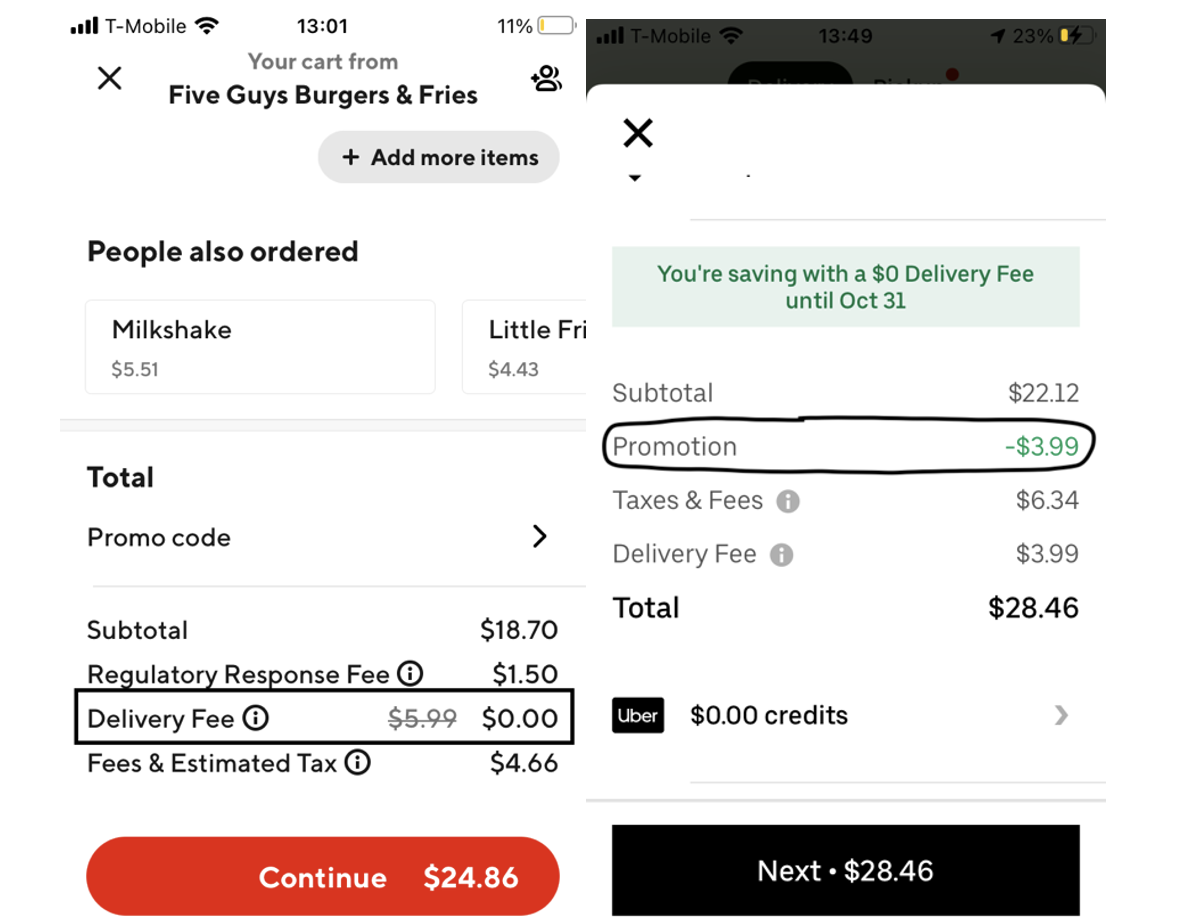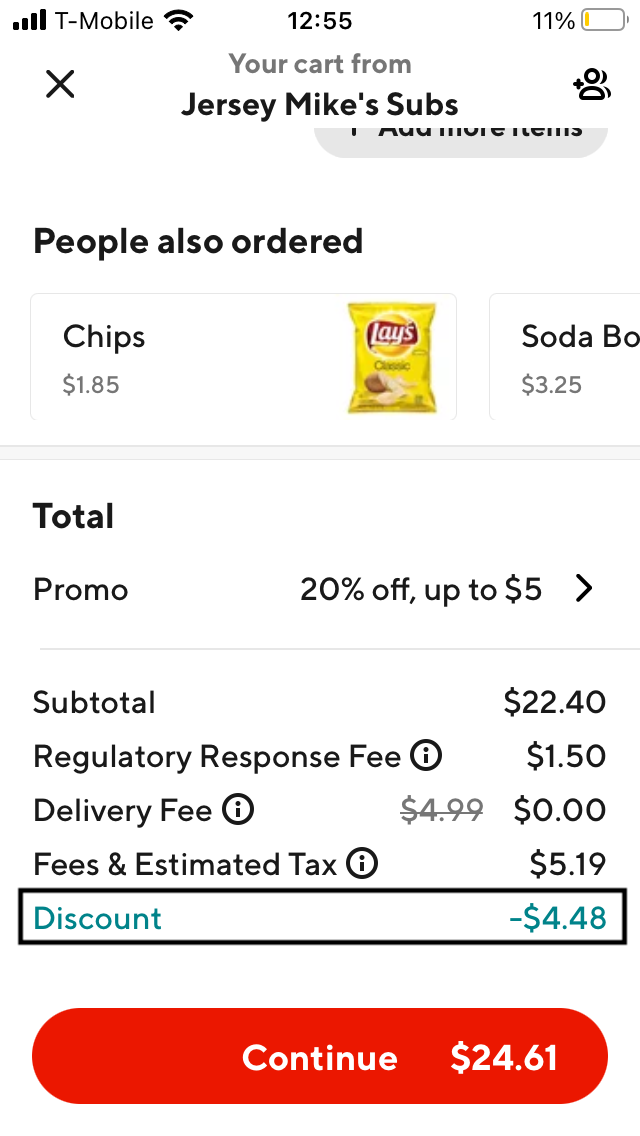Pandemic or not, food delivery is here to stay. While gross order value and revenue growth rates for Uber Eats and Doordash will decline from an average of 91% y/y in June to 48% y/y in September, the segment still is reporting outsized growth compared to broader tech-enabled industries. To track the services’ value to consumers, we recently completed the second round of our microsurvey around food delivery fees and were left with four takeaways:
- We found the average total meal premium (TMP) for delivery was about 70% compared to 85% in February.
- While food delivery is currently less expensive than we observed in our first survey, it’s the result of temporary promotions to attract customers. It’s an indication of a continued land grab among delivery apps.
- Pricing power matters in an inflationary environment, with evidence from menu pricing at Chipotle versus Taco Bell.
- Delivery is still a wild west, with opaque and inconsistent fee structures across apps.
Promotions to win market share
As a methodology refresher, we made ten identical food orders and did a fee average across three food delivery aggregators: DoorDash, Uber Eats, and Grubhub (acquired by Just Eat Takeaway in June). We then compared it to the price a consumer would pay going direct to the restaurant.
In our most recent survey, we found the average total meal premium (TMP) for delivery was about 70% after adding a 15-20% tip, which we believe most people give. That means a $20 takeout order would cost $34 if delivered. (While our study sample is small and delivery/service fees certainly vary across the country, we believe the basic insights are applicable more broadly. Here’s the Google Sheet with the individual restaurant orders and respective fees).
Believe it or not, this 70% premium is down from an average premium of 85% in our first survey. The lower fees are the result of temporary free delivery promotions, which leads us to believe the premium will widen in the future to 85% plus.

An example of one such promotion, the delivery fee was waved and an additional 15% discount was handed out:

It’s clear these companies are still in land grab mode and are using deep discounts to incentivize orders. We view this dynamic as evidence that food delivery is heading to a commodity service. When a service is commoditized, the competition to win and retain customers through discounts is unforgiving. Moving forward, delivery aggregators will need to differentiate themselves if they are to carve out a profitable piece of the market (DoorDash, Uber and Grubhub have yet to be profitable). One strategy is to land grab for customers and drivers to strengthen a marketplace’s network effects. As the network effects become powerful, driver utilization increases, and delivery times and cost should decline.
Large restaurants are raising prices, local ones are keeping prices stable
Because we captured meal prices in February, we were able to measure how much restaurants have raised menu prices since then. The average meal price increase between February and October was 4%. However, this wasn’t dispersed evenly across all restaurants. Local diners that we checked had largely stable prices. In contrast, Taco Bell increased the price of its Crunch Wrap Supreme meal by 2.5%, McDonald’s raised the Double Quarter Pounder meal by 5%, and Chipotle raised the price of its chicken bowl by more than 10%.
Food delivery is still a regulatory wild west
Inconsistency is a defining feature of delivery apps. For example, we found the tax charge as a percentage of the total meal price varied widely across restaurant and delivery marketplace. For some orders, the tax fee was more than 12% of the total meal price, in others it was only 7.5%. Additionally, Uber Eats and DoorDash continue to charge a temporary “regulation fee” in response to local government regulation capping delivery fees, but Grubhub doesn’t. In short, lack of price and fee transparency is becoming part of the fabric of the food delivery industry.
